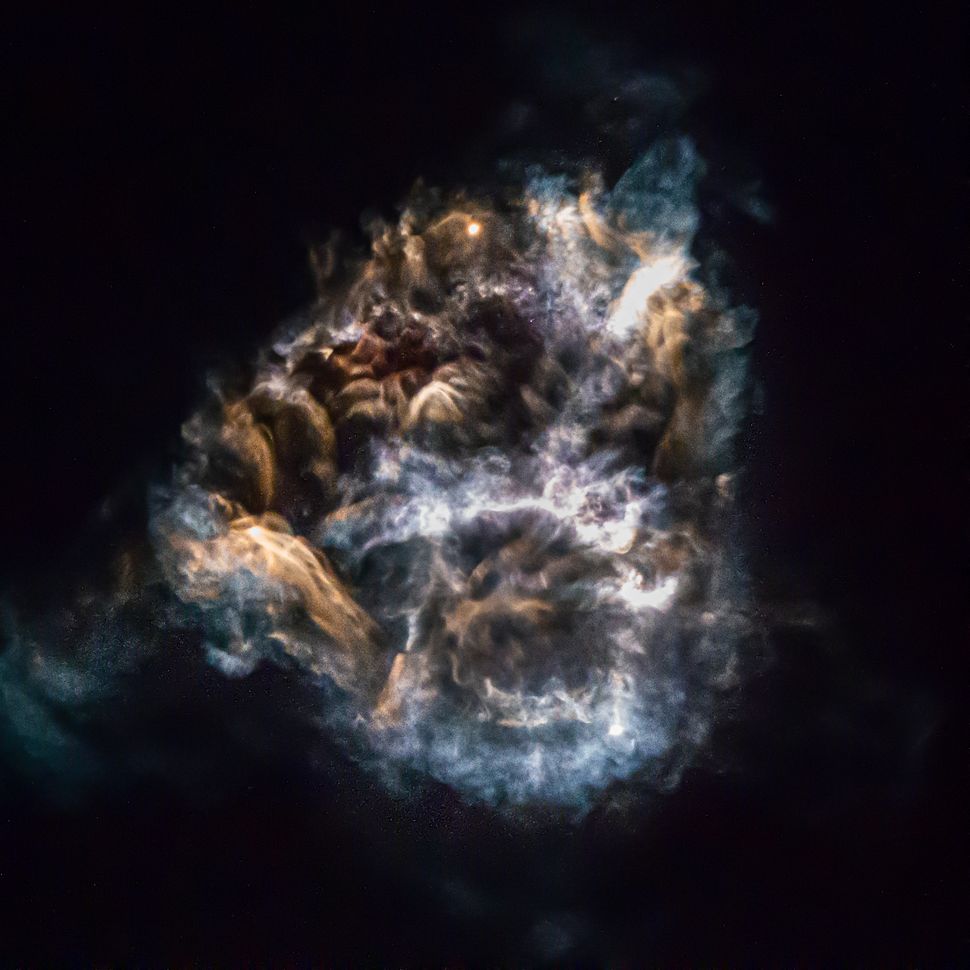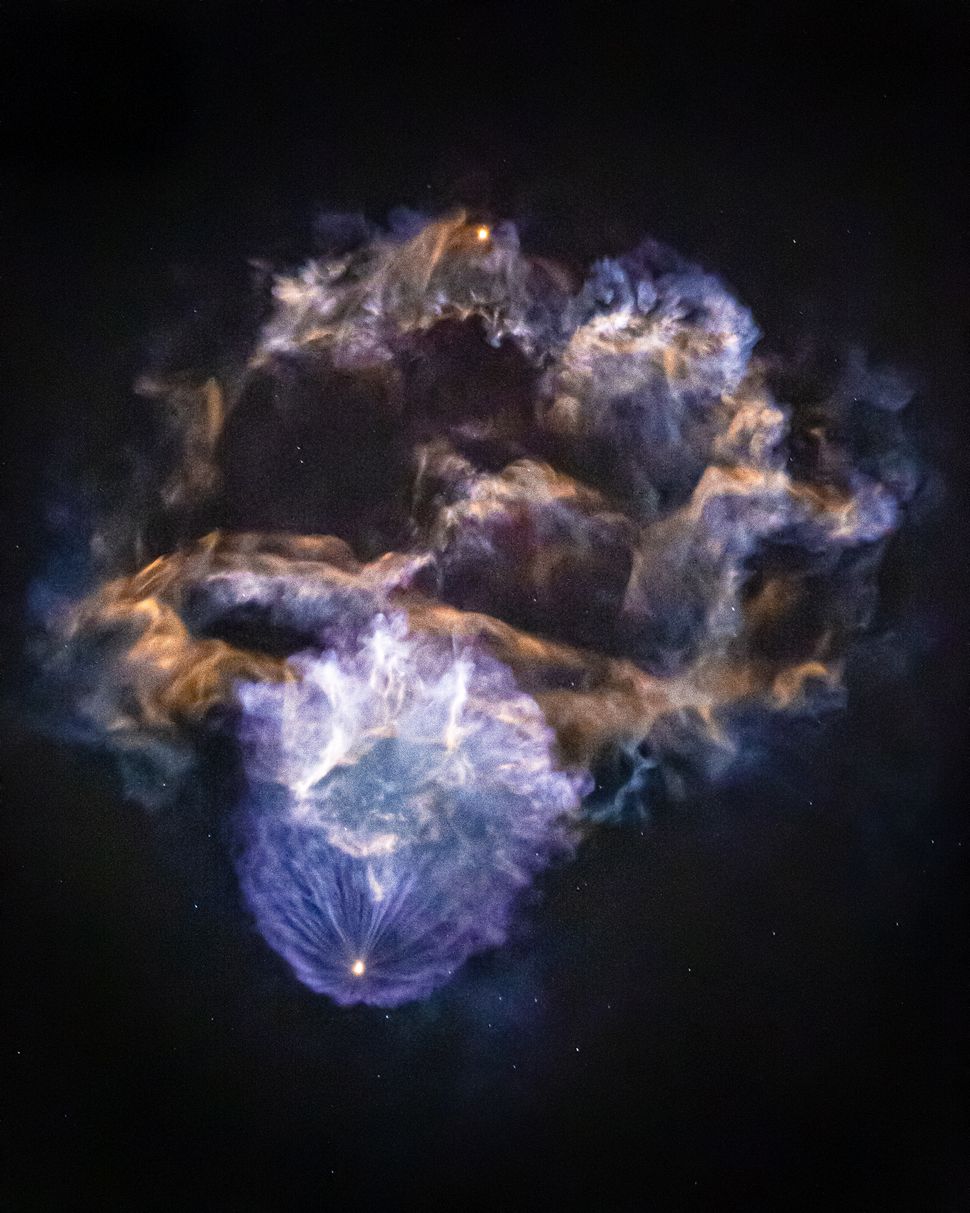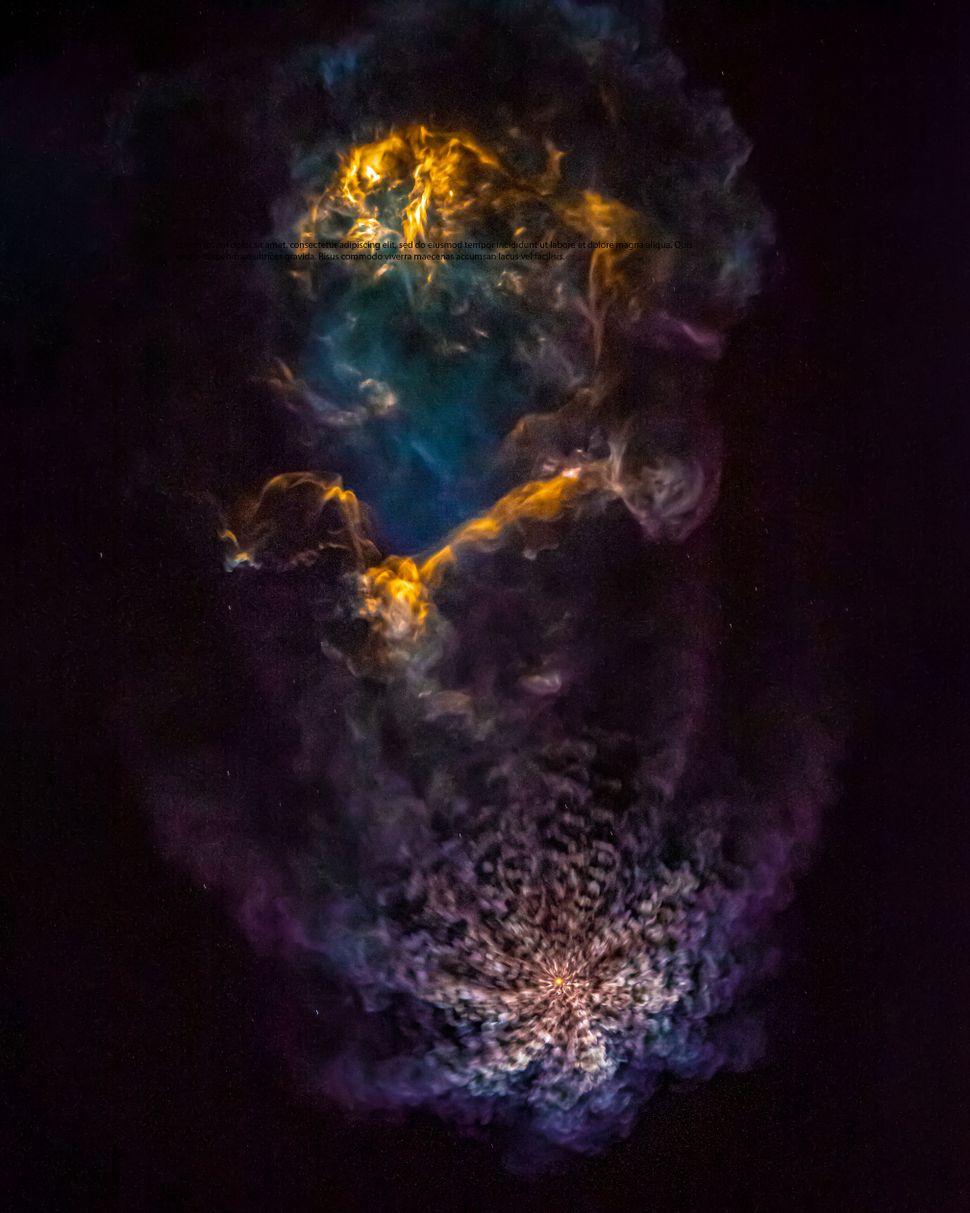What's that in the sky? It's a SpaceX rocket, but it sure doesn't look like it
CAPE CANAVERAL, Fla. — Planetary nebula? Supernova remnant? No, this incredible image is actually a photo of a rocket launch. The rocket's exhaust combined with atmospheric effects emulates an image of a deep-space object.
A photographer captured the shot during the launch of SpaceX's 20th cargo resupply mission on March 6 as the Falcon 9 blasted off toward the International Space Station. Before the first-stage booster touched down at the company's landing zone, a short distance away, it created quite the spectacle.
"It's always amazing to see this phenomenon happen in real time," Erik Kuna, a spaceflight photographer for Supercluster, told Space.com. "But there's nothing like seeing the images captured afterwards in your camera's viewfinder. I'm always amazed at the detail and clarity."
Video: SpaceX rocket stage separation captured in amazing ground view
Related: In photos: SpaceX launches third batch of 60 Starlink satellites to orbit
Standing in a grassy field at NASA's Kennedy Space Center that night, I, too, watched as the Falcon soared into the night sky. Appearing as a bright orange fireball, the rocket turned night into day, while the roar of the engines washed over me.
It was cold and windy at the press site, but it was also a clear night. This meant that you could see the rocket as it went through the various stages of flight: liftoff, main-engine cut-off (MECO), stage separation, second-stage ignition and a series of three landing burns.
As the rocket executed these steps, a glowing cloud appeared in the sky, resembling a planetary nebula. The cloud pulsed and rippled as the rocket's engines burned through their fuel. In the cloud, you could see two bright dots that separated as the rocket's two stages moved farther away from each other.
The phenomenon is featured in a short video that SpaceX posted to Twitter following the launch. The company explained that the effect is produced following stage separation, when the two stages are each doing their own thing: the second stage is firing up and propelling the payload into orbit while the first stage is firing its engines to head back to Earth.

Erik Kuna captured an incredible view of SpaceX's CRS-20 cargo launch to the International Space Station. In this image the launch resembles a planetary nebula. (Image credit: Erik Kuna/Supercluster)
The result? A trippy-looking rocket "nebula." But this isn't a phenomenon unique to the launch earlier this month. Erik Kuna, has been enthralled by the nebula since he first captured a nebula shot during the CRS-17 launch last year.
According to Kuna, most launches can cause stunning light shows, it's just not always as pronounced. "It happens every launch, just some are more prominent than others," he told Space.com. "The best are SpaceX launches where the booster returns to land, but any launch will have some level of the phenomenon."
For instance, during twilight launches just before sunrise or sunset, the sun can illuminate the rocket's plume and make it look like a giant jellyfish in the sky. These launches are often confused for UFOs because of the weird squiggly clouds produced. (Spoiler alert: It's definitely not aliens.)

ULA's Atlas V rocket, carrying the AEHF-5 military communications satellite, launched at dawn on Aug. 8, 2019. The rocket's exhaust is illuminated by the sun, producing a jellyfish-shaped plume. (Image credit: ULA)
Nebula images require slightly different circumstances, however. First, you need a nighttime rocket launch and a booster landing, preferably touching down on land.
That's where the Falcon 9 and Falcon Heavy come into play. SpaceX designed its Falcon family of rockets to be reusable, so after liftoff, the rocket's first stage conducts an aerial somersault, reorienting itself midair to return to Earth. Then, it gently touches down, either on land or on the deck of a floating platform at sea.
Return to land landings are best for nebula shots because their flight trajectories make the interactions between the first and second stage separation and the boostback burn more visible against the dark sky. "This creates a magical symphony of light and gases that mix into a canvas of colors and shapes, producing one epic photo," Kuna told Space.com
"During previous night launches, I noticed that we would see this atmospheric glow almost like auroras around the rocket exhaust," he said. "The rockets were producing these fascinating patterns that looked a lot like deep-space images."

The interactions between a rocket's first and second stages can produce a dazzling image reminiscent of a nebula in deep space, as seen in this image of a SpaceX cargo launch to the space station. (Image credit: Erik Kuna/Supercluster)
Kuna set out to capture the incredible phenomenon with photography, researching what kind of gear and settings he would need to use. Thanks to the ultrasensitive sensors in his camera and special light-gathering lenses, he was able to capture the stunning spectacle.
"The technique is kind of simple once you know your subject and understand what is happening," he said. For photographers who want to give it a try, he recommends a high ISO, a wide aperture and a slow shutter speed with a telephoto lens.
Kuna says there's a bit more to it than traditional launch shots, but that success really comes down to mastering basic concepts. Kuna was the first to capture the spectacle, but has seen a rise in the nebula's popularity ever since.
"I think it's been elusive for many because as photographers we are weary of things like noise [variations in brightness or color] or lack of sharpness in an image," he says.
But experimentation pays off. When he looked at his camera, he knew he had something special — the holy grail of launch shots: a rocket nebula.
"I had a picture (in my head) of what I thought a nebula looks like," Kuna said. "I started experimenting and finally captured it during that launch." He said his co-worker noticed the similarity to the cosmic cloud. "He leaned over my shoulder and said 'that looks like a freaking nebula,'" Kuna said. "I knew I got the shot." And the term "rocket nebula" was born.
So what do we see when looking at a rocket nebula photo? According to Kuna, in the CRS-17 photo, the first stage engine appears as a pinpoint of orange glow while the second-stage vacuum engine radiates out as a bluish purple web of light on the bottom.
"These two interact to form the image you see, both areas smashing into each other, wave after wave, creating a beautiful display in the dark sky," he said.
Each nighttime land landing, Kuna tries to photograph the nebula. So far, he's captured three: CRS-17, STP-2 (a Falcon Heavy mission) and now CRS-20. (The CRS-17 booster touched down at sea, not on land, but it was close enough to the launch site to produce the same effects.)

In this view of a SpaceX Falcon Heavy launch, the two stages are more pronounced, with the rocket's second stage producing the incredible purple spirals at the bottom of the image. (Image credit: Erik Kuna/Supercluster)
John Kraus, a local rocket photographer, had a different take on the CRS-20 nebula that was featured in NASA's Astronomy Picture of the Day (APOD) on March 12. In it, he focuses more on the boostback burn, the first of three burns that the rocket conducts in order to land itself.
In his image, we see the Falcon 9's first-stage boostback burn arc up toward the top of the frame as the second stage continues on its journey to low Earth orbit, its own fiery trail visible below the boostback burn. In the background are expanding exhaust plumes from the rocket's two stages.
A closeup, long exposure look at Falcon 9’s boostback burn and second stage burn, and the resulting plume interaction between the two stages. Incredible. pic.twitter.com/ki1lnJL979March 7, 2020
This image is a hybrid between your typical "streak" photograph, a sort of time-lapse image, and a rocket nebula. Streak shots have historically been rocket photography gold if you frame your shot just right. That's because in one shot, a photographer can capture the entire launch, including the landing.
"I think [streaks] are an exciting way to sum up an entire launch — or in my case, a unique portion of it — in a single photograph," Kraus told Space.com.
Kraus and Kuna both say that planning a shot like this is very different from planning a streak.
"Nebulas and streaks are two different worlds," Kuna said. "One is about capturing a small amount of light through the biggest opening possible on your camera and focusing on a specific moment of the launch, while a streak aims to capture a large amount of light in a very small opening, usually through a wider lens during a long period of time to convey the rocket's motion."
"To think we would never see this sight if SpaceX didn't land its boosters; it's truly majestic and awe-inspiring," he said. "I can't wait for the Starship boostback!"
Whether you're trying a streak for the first time or a nebula or anything else, Kraus said to remember to try new things, you never know what you may capture.






